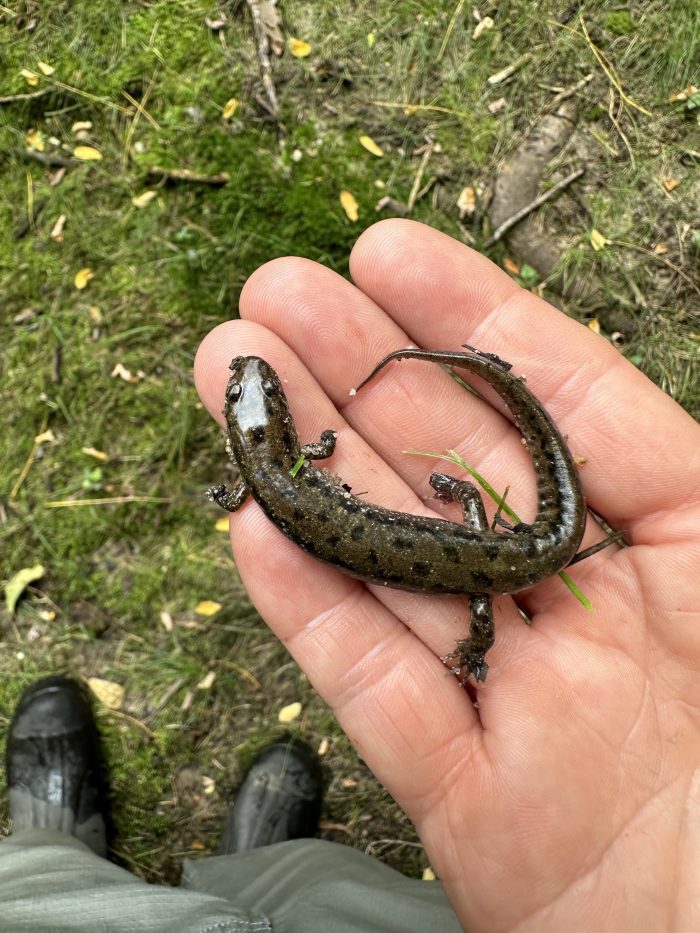Salamander discovered after a century ‘hiding in plain sight’ in Stony Brook stream

By Sabrina Artusa
Anita Lago was walking along a stream leading to the emptied Stony Brook Mill Pond on Sept 1, overturned earth and strewn twigs littering her path, when she spotted a black object. Thinking it was a fishing lure she picked it up.
“It was not a fishing lure, it had legs,” she said.
Lago put it back and showed a picture of the salamander to John Turner of the Seatuck Environmental Association, who shared it with Smithtown High School East senior and Four Harbors Audubon Society board member Gabe Finger. Finger and Turner identified the salamander as a northern dusky salamander.

The northern dusky salamander isn’t known to live on Long Island — the only traces of it having existed on the island are nearly a century old. One of the only samples was secured by Long Island naturalist Roy Latham.
Finger and Turner returned to the pond. Finger overturned a rock and found another. Wading in the stream, Turner and Finger found four more salamanders of two different morphs: two salamanders were darker gray and two were a lighter, sandier color. The genetic expression of the salamander allows for wide varying appearances, Turner said, just like people.
The finding was pure “serendipity,” according to Turner. “No one was looking for it.”
“It is remarkable for a species that is thought to be gone for almost a century and to still be here and to be here in a fairly suburban part of Long Island,” Turner said. “I would not think of Stony Brook as where you would find it. I would think it would be further out east, maybe by the pine barrens, and it is hiding in plain sight.”

Finger, who will be attending Cornell University to study sustainability and wildlife biology. gave a presentation about the finding at a Long Island Natural History Conference at Stony Brook University on March 21. “Since I was very, very little I’ve always been just fascinated with animals and I knew from a very young age that all I wanted to do with my life was study animals,” he said.
Since the salamanders found at the Stony Brook Mill Pond have likely been geographically separated from their ancestors for tens of thousands of years, it is possible that they evolved into a new species —an offshoot of the northern dusky salamander.
The northern dusky salamander resides in cold, trickling waters. The small, fast flowing tributaries of the North Shore fit these criteria: the streams aren’t in the sun long enough to get warm and are fast-flowing enough for a quick turnover of water. The salamander also lurks in the muddy stream banks, maybe hiding under a rock or log.
Turner and Finger can’t pursue their studies further until they have permission to take a small toe clip of the salamander to study its DNA. “There’s been a lot of red tape to go through,” Finger said.
Once they have a DNA sample and the salamanders become more active in the warmer weather, researchers can begin employing environmental DNA collection techniques to detect the presence of salamanders by simply testing the water of streams in which they potentially reside.






